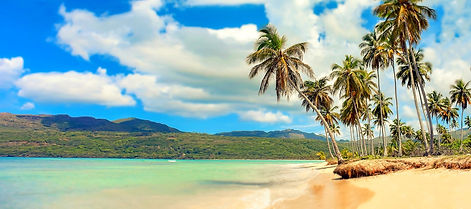Dominican Republic
A lush tropical paradise with a robust history.
The Dominican Republic is located in Latin America. It has an attractive and welcoming environment with easterly winds cooling the country reduce temperatures during the dry season, making it a huge tourist attraction. The Dominican Republic also has a rich history, being the first place in Latin America that European colonizers ever landed in, as well as housing many Indigenous people in the past. It also had many important things that happened recently, such as multiple changes to the government, the reign of the cruel dictator Raphael Trujillo, and a revolution severe enough that it was quickly intercepted by the US. Overall, the Dominican Republic is a beautiful country with a rich history, and it would be great to place going there on your bucket list.

Pixabay
History and Demographics
The Dominican Republic is an attractive tourist destination located on the island of Hispaniola, with a stable, democratic system of government. Its history is in stark contrast to this image, however. Hispaniola was originally inhabited by the Carib and Taino people, whose long time on the island was disrupted by Spanish conquistadors led by Christopher Columbus, whose conquest of Latin America started in Hispaniola. The Spanish originally started to make colonies on the northern coast but were led away due to reports of abundant gold and riches, finding and colonizing Santo Domingo. The diseases they brought and the violence they caused led to the near extinction of these indigenous people. As the Spanish then changed their focus to the colonization of Mexico and Peru, famous for their riches, Hispaniola was forgotten for the better part of the next three centuries. The island also suffered constant raids by British, Dutch, and French marauders and buccaneers further devastated the island, eventually causing Spain to recognize France’s claims to the western third of the island, which became the intensely-repressive slave colony of Haiti. But France’s ambition for Hispaniola didn’t stop there and after Spain was defeated in many wars raging in Europe at the time, France claimed the rest of the Island. French rule did not last long, as a massive slave revolt led by Toussaint L’Overture and Jean Jaques Dessalines turned Haiti into an independent country and caused the eastern two-thirds of Hispaniola to be reunited with Spain. In 1821, it was the southern part’s turn, when a group of rebels expelled the Spanish governor declared the independence of a nation that they dubbed, the “Independent State of Spanish Haiti.”Shortly thereafter, Haitian troops led by the then-president of Haiti, Jean-Pierre Boyer, overran the eastern part of the island, instigating a 22-year occupation. This occupation was brutal, cutting the church’s ties with Rome, forcing out the traditional ruling class, and crushing Western European and Spanish cultures. In response, the Dominicans led by Juan Pablo Duarte, who was known as the “father of Dominican Independence” organized a secret society to fight the Haitians, and the Dominican Republic finally achieved independence in 1844. There were plenty of hardships in the Republic during the subsequent years, but none were are severe as the reign of Raphael Trujillo. Trujillo ruled from 1930 to 1961 as a brutal dictator. He heavily enforced censorship and conformity laws and killed many of his political opponents. Around the 1950s, however, opposition against Trujillo grew with many influential dissenters such as the Mirabel Sisters, also known as Las Mariposas joining in until he ultimately was assassinated on a rural highway in 1961. But the adversity and instability didn’t end there. In 1965, there was a democratic revolution that could have changed the country’s destiny. But the revolution took place in the middle of the Cold War, and shortly after the Cuban revolution. Due to these events, many in the US were suspicious of democratic movements in Latin America, fearing that they would turn communist. The US authorities put their support against the democratic revolution by occupying the country, crushing the revolt, and subsequently engineering an unfree election. Nowadays, the Dominican Republic is inhabited by the descendants of the Spaniards and Europeans who played a significant part in the history of the Dominican Republic.









